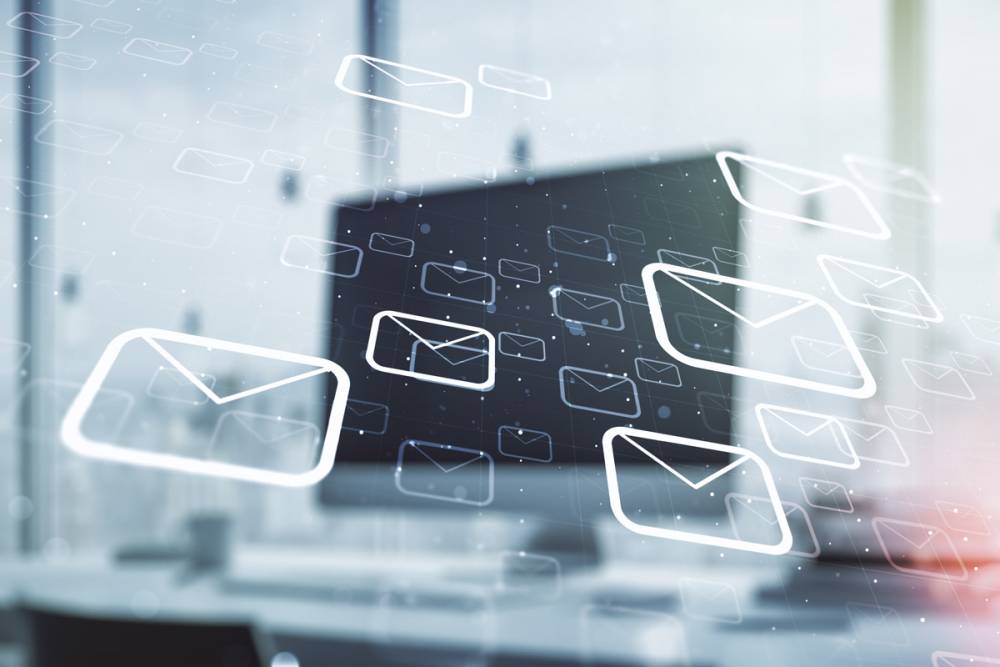Sustain Subscriptions Using Signups, PopUp Forms, & Push Notifications
The subscription-based model is now the go-to among businesses over traditional one-time payment models. This new phase, however, throws a question in the air— “How do business owners foster engagement to keep subscriptions rolling in like recurring decimals?”
With signup forms, pop-ups, and browser push notifications, businesses can significantly ease the flow of customer engagement. Even better, it can be put on auto-pilot to increase efficiency even beyond mere engagement to drive sales.
This post smoothly glides into this rich vein of opportunity — signups, pop-ups and push notifications. WHY you should be using them, and HOW to use them for your business. We’ll also touch on what pitfalls to avoid and also tricks for getting the most out of these tools.
How do Signup Forms, Pop-Ups, & Browser Push work?
Pop-up forms do exactly what they say on the tin. They’re forms that can be designed to pop up at strategic points on your website, usually to collect information from visitors to the website. A common practice is to set the pop-ups to pop when the web visitor has interacted with your content to a reasonable extent that signals interest. Say, scrolling down 60-80% of the page. A little intrusive — Yep, the kind users wish their ad blockers sniffed from a mile away and blown to smithereens — but nonetheless effective. Modern Marketing Partners came up with a study that revealed that pop-ups have a success rate of 3%. Super-lean numbers at a glance, but a little bit of context—it’s thrice as higher than using passive signup forms beneath your content.
Signup forms (usually a class of pop-ups) are designed for the specific purpose of customer acquisition. These forms are, however, not often designed as pop-ups. They can be deployed across several channels—in-app, website, or on social media.
Web push notifications are messages that trigger communications to users in real-time via the website, on desktop or mobile. Browser push is built to pull in your audience at set touchpoints of engagement. Whether popping in with a suggestion, reminder (about your subscription offer), or real-time update, browser push helps your brand stay in the target’s consciousness, thereby contributing to the entire user experience.
Why Organizations Use them (and you should too)
Over time, Pop-ups and push notifications have emerged as one of the best ways to drive customer engagement as they typically take hold of consumer attention immediately after they are received, unlike emails that are more likely left laying waste to unopened in-boxes.
Below, we list a couple of benefits in the pipeline for your subscription-based business when you integrate them into your marketing strategy:
— Using sign-up forms streamlines customer acquisition efforts
Before now, customer acquisition was synonymous with bulky forms. Several pages of forms with tens of fields requesting customer information. You’re probably familiar with this. If not with online businesses, you must have had to fill bulky forms when opening your bank account or when obtaining a credit card (**rolls eyes**). The entire process can be exhausting.
With simple pop-ups and sign-up forms, these long forms can be finally thrown out the window. With only a few fields to be filled, customer acquisition can be completed in seconds, allowing businesses to build even wider subscriber bases, composed of various people who might have been bored and burdened with unnecessarily lengthy forms.
— Upsell and cross-sell to consumers
One of the best uses of pop-ups and push notifications is to upsell or cross-sell to existing customers. Upselling involves encouraging customers to upgrade to newer models or to buy more expensive subscriptions.
Although not a subscription-based business, brands like Apple do this all the time in ads, asking existing iPhone owners to trade in their old phones for newer models. If you run a gym, this could be as simple as offering smaller classes, more specialized equipment or just any perk to get existing subscribers to upgrade their subscriptions.
Cross-selling, on the other hand, involves selling entirely new, but related products, also to existing clients. Again, revisiting Apple’s example; every year, they earn billions of dollars in revenue for cross-selling Airpods, ensuring the success of the move by removing earphone jacks from their phones. Funnelling down this strategy to subscription-based businesses could involve persuading customers to subscribe to a sister service, or to buy branded merchandise.
Upselling and cross-selling are usually quite successful; if well harnessed, have the potential to more than double your revenues. This is because it is many times easier to sell to existing customers than to convince new ones. This is because the existing customers have already decided that your business is worth their money, and will not need much convincing before they give you even more of it.
— Building brand trust and relationships with users
You already know that churning blog content, polls, surveys, newsletters, etc. are essential pillars of building brand trust. Usually, you would share those with them using emails. But push notifications are specially designed to arrest their attention, so you can share important information with them and conduct polls and surveys, thus getting them to establish a connection to your brand.
— Reestablishing usage
Pop-ups and push notifications help persuade users to reestablish usage. To illustrate, after a while of watching Netflix, you will begin to receive push notifications with suggestions of content to watch, nudging you to return to the site. And with the vast amount of user data at their disposal, they can personalize these notifications based on your user’s preferences, recommending shows that are likely to reestablish your use.
— Purchase and subscription reminders
Every so often, users, for personal and well-documented reasons, may abandon a purchase decision, and their cart in the middle of making a purchase.
Using push notifications, you can nudge them to return to the website to complete the purchase. When it’s near time for them to renew their subscriptions, push notifications can be used to remind them. All of these help customer and revenue retention rates.
— Automation
Automation is (pretty much) putting everything on auto-pilot. Just integrate them into your website to collect all the user data you can get for a more personalized user experience.
Unlike in the past where customers had to fill bulky forms and have them cross-checked by underpaid clerks, they can now simply onboard by interacting with the algorithm. Don’t you just loovvve tech-driven innovation?

Best practices
Here are a few pitfalls to avoid and sure tips for getting the most out of your pop-ups, signups, and push notifications. Well, here they are.
— Don’t overdo it!
Why pop-ups and push notifications work so well is because they hijack users’ attention. They’re quite active, unlike emails which passively lurk around your inbox until you take the intentional steps to open it. These tools immediately trigger an action right on the users’ screens, tugging at their instincts to engage.
However, this works only because users switch on the feature on their phones that lets them receive these notifications. For pop-ups, they can use pop—blockers (some ad-blockers also shut off pop-ups), and for push notifications, they can simply switch off your website's permission to do so.
So, what you don’t want is to abuse the privilege you’ve been afforded by your web visitors (Push Notifications. Yes. But ‘pushing user’s buttons’ with incessant pop-ups and signup forms? Not quite. It’ll only get your access shut off by the user.)
— Optimize your forms
The available data suggests that most users prefer to access websites on their phones over their PCs. Thus, it’s ideal to feature only one column in your form. Two columns side-by-side may not be easily optimized for mobile screens, shutting off the millions of users who actually prefer them.
Also, use as few fields as possible. You don’t want to replicate the bulky bank forms that we mentioned earlier on your website. You really only need little information to onboard a new customer. You can set about obtaining others much later, probably during verification.
P.S. One hack is to only feature one encompassing “email” field instead of having the conventional multiple fields of “email”, “first name”, “last name”, and “username”. Plus, instead of including a “confirm password” field, you can simply let users view the password they typed in to make necessary changes.
— Personalize notifications
A grave mistake while using push notifications will be to send general notifications to users. Nothing puts people off as much as being viewed as just a statistic. Besides, a general notification will hardly intrigue them enough to engage.
Instead, you can analyse the user data that you have already collected to segment and create notifications for users in ways that are peculiar to them. Again, Netflix uses this feature to promote movies and shows to users, based on data that they already have about their preferences.

Retrieve More Data Seamlessly to Get More Done.
Signup Forms, Pop-Up and browser push are excellent tools to have in driving customer engagement, and ultimately, revenue growth. However, to reap its numerous benefits, it must be applied carefully to avoid a customer backlash of ‘bounce rate’ proportions.
Here at Apsis One, we made sure our solutions are easy to use and set up, with real-time capabilities at break-neck speed, and marketing automation nodes to carefully help you map out your implementation strategy. Loyalty flows are also an essential part of our functionalities to help pitch cross-selling & upselling your loyal customers and make them even more vibrant brand evangelists with better user experience.
One factor that invariably affects your experience using these features is the provider you employ. We offer more than just a snappy suite of subscription-based solutions.
We offer an experiential-based platform for your targets. With Apsis One, you’ll get a fully customizable sign-up, pop-up form and push notification tool, fully automating the process of onboarding customers and managing relationships with them, allowing you to enjoy much smoother process flows.
Oh, and there’s plenty of hidden value in store for you as well. In short, why don’t you try our free demo today?


